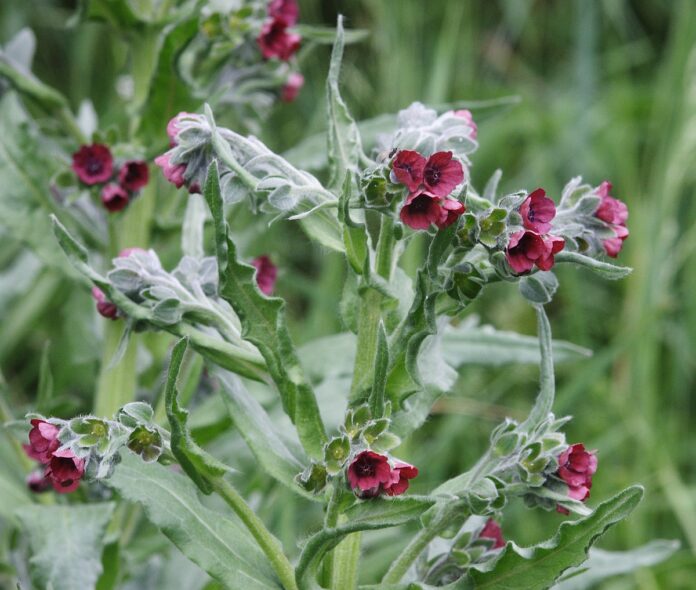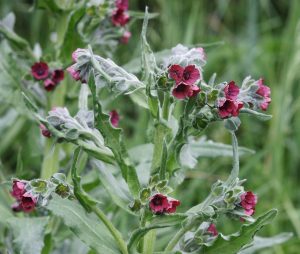
By: Blaine Bug Crew

Have you seen or heard of the noxious weed called houndstongue? If you have, keep reading and learn more about it!
In this article, we will talk about what houndstongue looks like, where it is usually found, and what to do and how to control it when it is found.
Houndstongue is a biennial, or short-lived perennial, that reproduces barbed seeds that readily adhere to fur, hair and wool. In the first year, the plant develops a rosette with airy, linear leaves that range from 10-30 cm in length. Plants typically grow to 35-140 cm tall the second year. The reddish-purple, five-lobed flowers bloom June through August.
Each plant produces an average of 500 seeds, which are composed of four prickly nutlets, each approximately 1 cm in length.
Houndstongue’s ability to spread has created serious problems on rangeland and pastures where the plant quickly colonizes disturbed sites and heavily grazed areas in riparian zones. Houndstongue contains pyrrolizidine alkaloids, making it poisonous to livestock and horses.
So, the next time you see houndstongue in your yard, look at these facts about houndstongue and how you can prevent this infectious weed from growing anymore in your yard.
If you see this dangerous noxious weed, contact the Blaine County Weed Department at (208) 788-5574.


